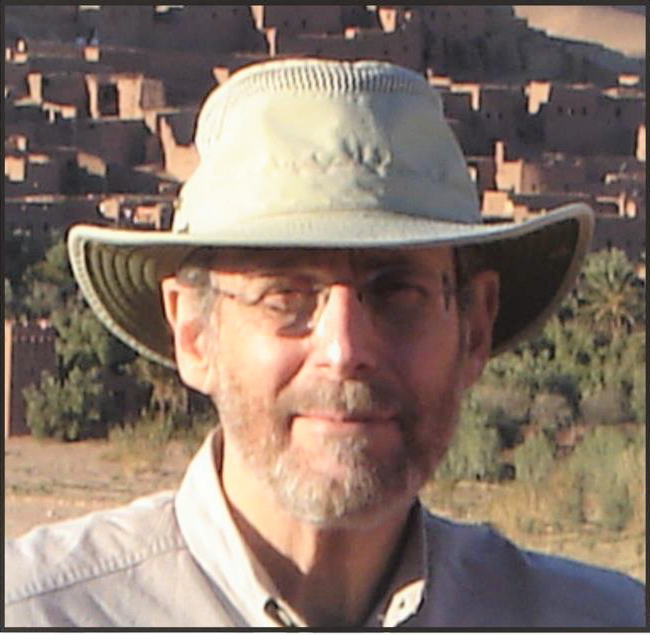William L. Graf
1947 - 2019

William L. Graf one of the nation’s leading geomorphologists and riverine policy scholars passed away on December 27, 2019 at the age of 72. At the time of his death, he was working on a book length manuscript on American Rivers using multiple lenses—arts, history, science, engineering, public policy, and philosophy.
Graf was a Foundation University Professor Emeritus at the University of South Carolina. Before coming to the University of South Carolina in 2001, he was the Regents’ Professor at Arizona State University. Graf received his Ph.D. from the University of Wisconsin in 1974 with his first academic appointment at the University of Iowa after a brief stint as an intelligence officer in the U.S. Air Force.
Dr. Graf published 14 books, his most notable are Fluvial Processes in Dryland Rivers, Wilderness Preservation and Sagebrush Rebellions, Plutonium and the Rio Grande (which won the Kirk Bryan Award from the Geological Society of America), and Dam Removal: Science and Decision Making. Among his more than 150 publications are his seminal articles on the hydrologic and geomorphic effects of hydroelectric dams on American rivers (“Dam nation: A geographic census of American dams and their large-scale hydrologic impacts” in Water Resources Research (1999) and “Downstream hydrologic and geomorphic effects of large dams on American rivers” appearing in Geomorphology (2006)).
Dr. Graf received numerous awards throughout his distinguished career from the AAG (G.K. Gilbert Award, Research Honors, Meredith F. Burrill Award, Mel Marcus Career Achievement Award, Water Resources Distinguished Career Award), the Geological Society of America (Kirk Bryan Award), and the British Geomorphological Research Group (David Linton Research Award). He also received the Founder’s Metal of the Royal Geographical Society of Great Britain, the John Wesley Powell Award from the U.S. Geological Survey, and the U.S. Army Outstanding Civilian Service Medal for his contributions to the U.S. Army Corps of Engineers. This was in addition to his receipt of the National Associate award from the National Academy of Sciences and his election as a fellow of the American Association for the Advancement of Science (AAAS).
Equally impressive is Dr. Graf’s service record to the AAG and the Geological Society of America’s, Quaternary Geology and Geomorphology Division. For the former he served as Vice-President and President, a Council member, and on numerous committees. For the GSA he was also Vice-President and President as well as serving on additional committees. During his career, Graf served as an associate editor for the Annals, PG, GSA Bulletin, and Environmental and Engineering Geosciences.
Throughout his distinguished career, Dr. Graf never lost sight of his intellectual home in Geography. He supervised 38 PhD and master’s students and served on many more graduate committees. While trained in physical geography with a minor in water resources management, Graf’s perspective and interest in the intersection of science and policy for public land and water made him one of the country’s most sought after science advisors and expert witness in resolving conflicts between environmental preservation and economic development, and the interaction between science and natural resources decision-making. Most of these policy consultations engaged his expertise on human impacts on river morphology, processes of contaminant transport and storage in river sediments, downstream impacts of large dams, and riparian habitat changes in rivers. He advised local, state, and federal agencies (including the Bureau of Reclamation, U.S. Army Corps of Engineers, Department of Energy, and the National Park Service), as well as non-profits. He served as a consultant and expert witness in 30 legal cases on wetland and river processes and the effects of hydroelectric dams on downstream rivers. President Clinton appointed him to the Presidential Commission on American Heritage Rivers, and Secretary of Defense Chuck Hagel confirmed him as Chair of the Environmental Advisory Board of the U.S. Army Corps of Engineers.
Dr. Graf felt that professional service to the non-governmental entities such as the Heinz Center and the National Academies of Sciences, Engineering, and Medicine was critical in fostering the intersection between science and public policy. Not only was he a member of many different Boards but also standing committees including chairing the Geographical Sciences Committee, four committees overseeing science for the restoration of Florida Everglades, the committee on sediment issues in the Missouri River. His longstanding advocacy for geographical science to support public policy decision making on rivers and land management have left their mark and opened doors for other geographers to carry his prospective forward.
While his core was geography, the discipline never bounded his identity and scholarship. His willingness to seek knowledge, ideas, and approaches and integrate these into his study of rivers, public lands, and policy has enriched our discipline in a myriad of ways both large and small. Dr. Graf was among the staunchest supporters of geography and never shied away from his identification as a geographer, especially in his public policy and advocacy work. He was the leading light of his generation of geographical scholars and the consummate professional. We will miss his wise counsel, his sense of humor, and most of all his all-encompassing selfless spirit and encouragement to press on.
—Members of the University of South Carolina Geography Department